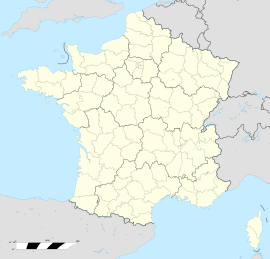Durfort, Tarn
| Durfort | ||
|---|---|---|
| Commune | ||
|
||
| Coordinates: 43°26′20″N 2°04′07″E / 43.4389°N 2.0686°ECoordinates: 43°26′20″N 2°04′07″E / 43.4389°N 2.0686°E | ||
| Country | France | |
| Region | Occitanie | |
| Department | Tarn | |
| Arrondissement | Castres | |
| Canton | La Montagne noire | |
| Intercommunality | Lauragais-Revel-Sorezois | |
| Area1 | 4.54 km2 (1.75 sq mi) | |
| Population (2006)2 | 293 | |
| • Density | 65/km2 (170/sq mi) | |
| Time zone | CET (UTC+1) | |
| • Summer (DST) | CEST (UTC+2) | |
| INSEE/Postal code | 81083 /81540 | |
| Elevation | 262–660 m (860–2,165 ft) (avg. 324 m or 1,063 ft) |
|
|
1 French Land Register data, which excludes lakes, ponds, glaciers > 1 km² (0.386 sq mi or 247 acres) and river estuaries. 2Population without double counting: residents of multiple communes (e.g., students and military personnel) only counted once. |
||
1 French Land Register data, which excludes lakes, ponds, glaciers > 1 km² (0.386 sq mi or 247 acres) and river estuaries.
Durfort is a commune in the Tarn department in southern France.
It is located Between Revel, Haute-Garonne and Sorèze, Tarn. It borders the shores of the Sor river, which leads to Montagne Noir (the Black Mountain). The town gave its name to the great Durfort family, which is distinguished in French and English history
Durfort is nicknamed Cité du Cuivre (the copper city), for the prosperous copper artisan trade that exists there, in addition to artisan trades in leather, glass, basket-making and jewelry.
Durfort is home to Musée du Cuivre (the copper museum), established in 1986, to document five centuries of the local copper craft.
...
Wikipedia



